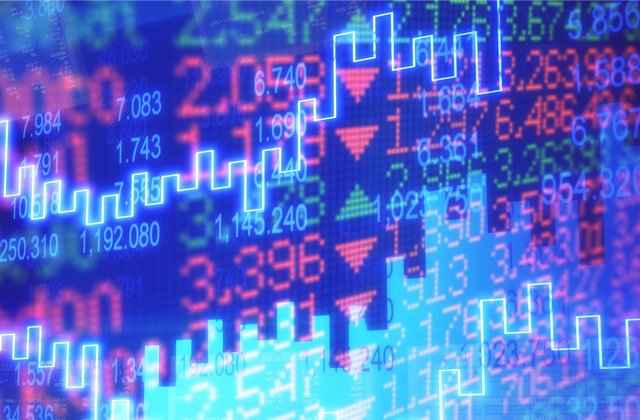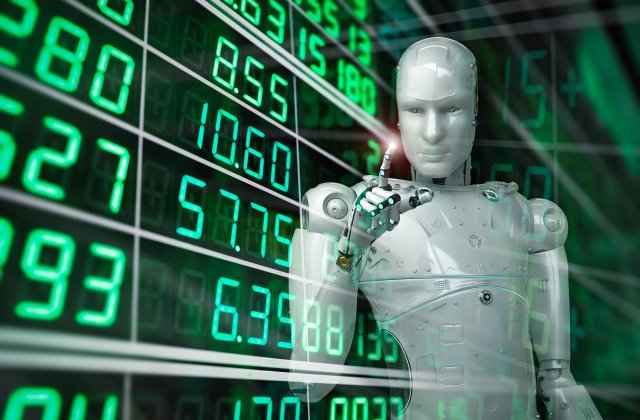
Ever since hitting a bottom on March 23, the stock market has been in rally mode. Through April 9, major U.S. indexes like the S&P 500 have already recovered about half of their losses. At one point down 36% from peak to trough, the S&P is now only down 13% year to date at the time of this writing.
But why? The world is a different place than it was on Jan. 1. Nearly 17 million Americans have filed for unemployment in the last three weeks alone. Estimates of the pandemic-induced shutdown's impact on the U.S. gross domestic product range from a 10% second-quarter decline to Great Depression-level declines of 30% or more.
Here's a snapshot of what the market's been thinking about, what the reasons for optimism are and some long-term risks that investors may be missing. A few things to watch:
The course of the virus.
The shape of the recovery.
Confronting challenges.
Looking ahead.
The Course of the Virus
Wall Street is largely trading on just two factors right now: the progression of the pandemic and the dynamics of a subsequent recovery.
To illustrate just how important the first of these factors has been, consider the 7% one-day gains in all three major indexes on Monday, April 6. The catalyst? Virus data over the weekend indicating U.S. hot spots like New York may be peaking and plateauing earlier than previously expected.
The important thing to remember here is that this is a new disease with a lot of unknowns surrounding it: ease of transmission, percentage of the population already infected, frequency of asymptomatic carriers, fatality rate, testing accuracy – the list goes on.
SUBSCRIBE:
"You just can't model the virus," says Richard Steinberg, chief market strategist at The Colony Group. Steinberg emphasizes that the huge uncertainties at play make monitoring the virus closely justifiably important to Wall Street.
"Markets are looking at what the trends are looking like in some of the hot spots and trying to extrapolate. How does that factor into the reopening of the economy? Don't forget that New York, L.A. and Chicago are 10% of GDP. So that's a really important component," Steinberg says.
The Shape of the Recovery
Where the U.S. and the world are on the so-called curve is important, first and foremost, for humanitarian reasons. But it's extremely important to how Wall Street thinks about valuation as well because it helps shape a consensus about what the shape of an economic recovery will look like.
The average individual investor may not realize just how important this abstract geometry is to their 401(k) balance , but it is. The pace at which corporate earnings recover from their inevitable 2020 free fall is extremely important to determining fair values.
"It's not so much how big the drop's going to be this year, but how much you're going to recover within five years," says Brad Cornell, an economist and the emeritus professor of financial economics at the Anderson School of Management at UCLA, when it comes to earnings.
"In other words, will there be a 'V shaped' recovery? How close to previrus earnings estimates will we be five years from now?" Cornell asks.
Under one valuation model Cornell constructed, stocks would still be undervalued – even assuming hits to short-term earnings ranging from 10% to 60% – as long as earnings five years out were unchanged from analyst expectations before the virus. What if earnings only recover to 80% of their previously estimated levels in five years? Under this model, which Cornell emphasizes is more illustrative than scientific, stocks would be meaningfully overvalued right now.
See:
"This doesn't feel like a 'V shaped' recovery," Steinberg says. "If it's more elongated and it's 90 days before demand starts to pick up because the pandemic is working its way throughout the country, it looks more like a Nike Swoosh."
Confronting Challenges: Potential Ripple Effects
The Federal Reserve has generally earned high marks in the early days of this crisis for its swift and unprecedented response to the unfolding events. The central bank slashed interest rates to zero, is printing and injecting trillions of dollars into the economy and has committed to buying as many Treasurys as necessary.
Pauses on mortgage payments and evictions, direct cash payments to all qualified Americans, deferred student loan timelines and an expansion of credit to small businesses – these are all useful, necessary and largely novel actions that will help proactively limit the economic damage done by COVID-19.
But record job losses are still pouring in, and stemming the bleeding in labor markets can't be easily fixed with the virus rampaging freely throughout the country.
Microsoft (ticker: MSFT ) co-founder Bill Gates, who publicly warned of America's unpreparedness for a pandemic years ago, has emerged as a leading expert in public health amid the pandemic. Gates, who along with wife Melinda has saved millions of lives by expanding access to basic vaccines, medicine and plumbing in poor countries, says a vaccine is likely at least 18 months out.
OK, so what happens when that day comes? You still have a contingent of "anti-vaxxers" in America, who may refuse to get such a treatment.
Cornell says the market will expect for a vaccine to be mandated. "The costs that you impose on other people by not getting a vaccine are so potentially large," he adds.
See:
In the U.S., it's unlikely such a mandate would go over well. Whether it goes over well or not, dramatic measures – many of which will be uncomfortable and unnatural – will have to be taken before the country can even return to seminormal operations.
For Steinberg, this is a tension he's thought deeply about. Ingredient No. 1 in a return to seminormal, he says, is "a change in mentality around how we view our personal freedoms in the U.S."
The reality is that even a vaccine isn't a panacea. Even if a vaccine was quickly developed, spun up, distributed and administered to the entire population, its safety and efficacy would have to be extremely high. That's likely to be challenging: Even the common flu requires a new vaccine each year due to constant mutations.
Far before any vaccine becomes widely available, testing is the most promising tool for bringing the economy – and the U.S. workforce – safely back online.
"Testing capacity, which we still have to develop, that is going to be the bridge from where we are today to the new economy," said New York Gov. Andrew Cuomo in his daily briefing on April 8.
"It's going to be a testing-informed transition to the new economy, where people who have the antibodies, people who are negative, people who've been exposed and now are better, those are the people who can go to work, and you know who they are because you can do testing," Cuomo said.
If early testing democratization is any indication, those days also seem pretty far off. More than a month after the disease's arrival in the U.S., less than 1% of the country has been tested. Early estimates from health experts say nearly one in every three infected patients is nonetheless testing negative for coronavirus .
Looking Ahead
Trying to visualize how the economy – and society itself, for that matter – ramps back up from this pandemic still seems like a fool's errand. Taking a sober look at some of the challenges outlined above only goes so far; the range of likely outcomes is too wide to project anything with confidence and vital timelines and degrees of pain remain unknowable.
Optimism and patience are absolute prerequisites for any successful long-term investor. But so too are caution and prudence. Benjamin Graham's concept of building a margin of safety into any investment is as relevant today as it's ever been, and it's worth remembering that before investors get too bullish based on short-term favorable shifts in the perceived pandemic curve.
Eventually, attention will shift away from the virus itself and markets will have to confront other problems. What will the impact of America's unchecked money printing be? How many small businesses will fail? How many large businesses? When and how will banks be politically allowed to foreclose on economically devastated homeowners?
Zachary Feinstein, assistant professor at Stevens Institute of Technology, identifies another area fraught with risk.
"Corporate debt has been extremely high compared to historic standards," Feinstein says. "This crisis is going to hurt corporate balance sheets. If you start having defaults on supposedly safe assets, that can definitely cause a lot of pain widespread throughout markets."
"If higher-quality debt starts to default in large numbers, that's not built into the risk models," Feinstein says.
Thankfully, the Fed seems to agree. On April 9, it announced a $2.3 trillion program to prop up the bond market, in particular the market for investment-grade corporate bonds.
Still, unless the central bank is willing to backstop all corporate debt without limitation, lower-quality debt could still carry the risk of mass defaults that the ratings companies – even after dramatically underestimating default risk in 2008 – didn’t see coming this time around, either.
The failure of credit-rating agencies, despite being one of the most glaring issues in the last financial crisis, has simply gone more or less ignored in the years since.
"It just kind of got lost in the shuffle after 2008," Feinstein says.
9 Worst ETFs of the First Quarter

Compare Offers
Compare Offers



Post a Comment